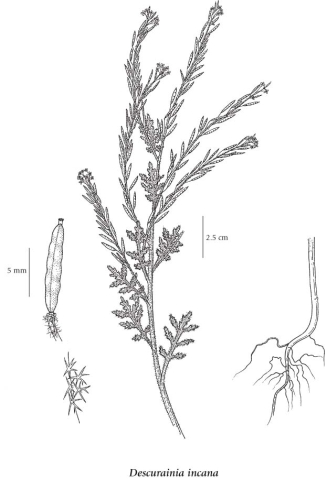Descurainia incana (Bernh. ex Fisch. & C.A. Mey.) Dorn
Richardson's tansy mustard (mountain tansymustard)
Brassicaceae (Mustard family)
Introduction to Vascular Plants
Richardson's tansy mustard (mountain tansymustard)
Brassicaceae (Mustard family)
Introduction to Vascular Plants

